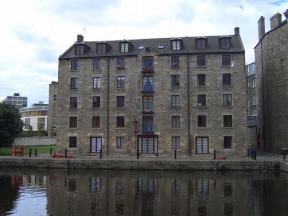
If the figure is indeed Roman, it seems more likely that it is meant to depict the god Mercury, but even then we are venturing into the territory of guesswork, as the carving is so worn as to make further identification almost impossible.
One theory, which has as much plausibility as the Roman interpretation, is that the carving is part of a pagan shrine, possibly to the god Cernunnos or Ogmios. In any case, the carving appears much more likely to represent a human figure, bearing a club over one shoulder, than an eagle.
The carving is some 3.5 feet tall, and 2.5 feet wide at the base. The carving stands out over 4 inches from the rock surface, which may account for the weathering which has so badly affected it. It has also been much defaced, leaving little more than a faint outline.
 We've 'tagged' this attraction information to help you find related historic attractions and learn more about major time periods mentioned.
We've 'tagged' this attraction information to help you find related historic attractions and learn more about major time periods mentioned.




